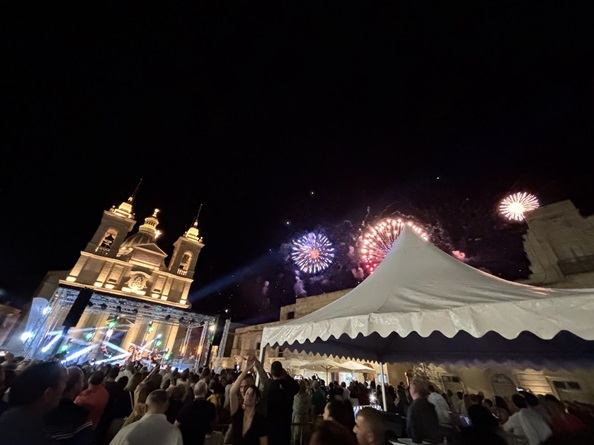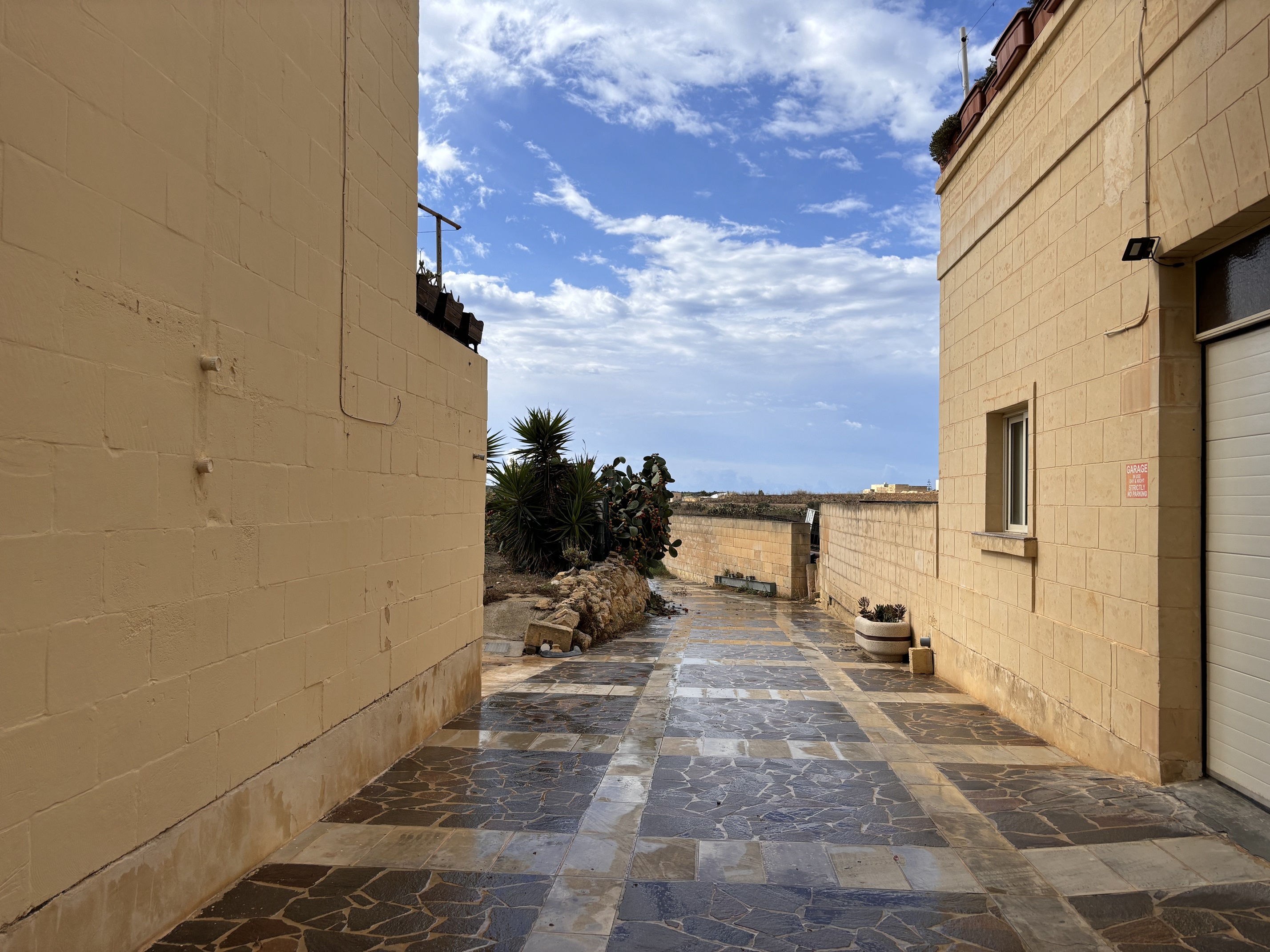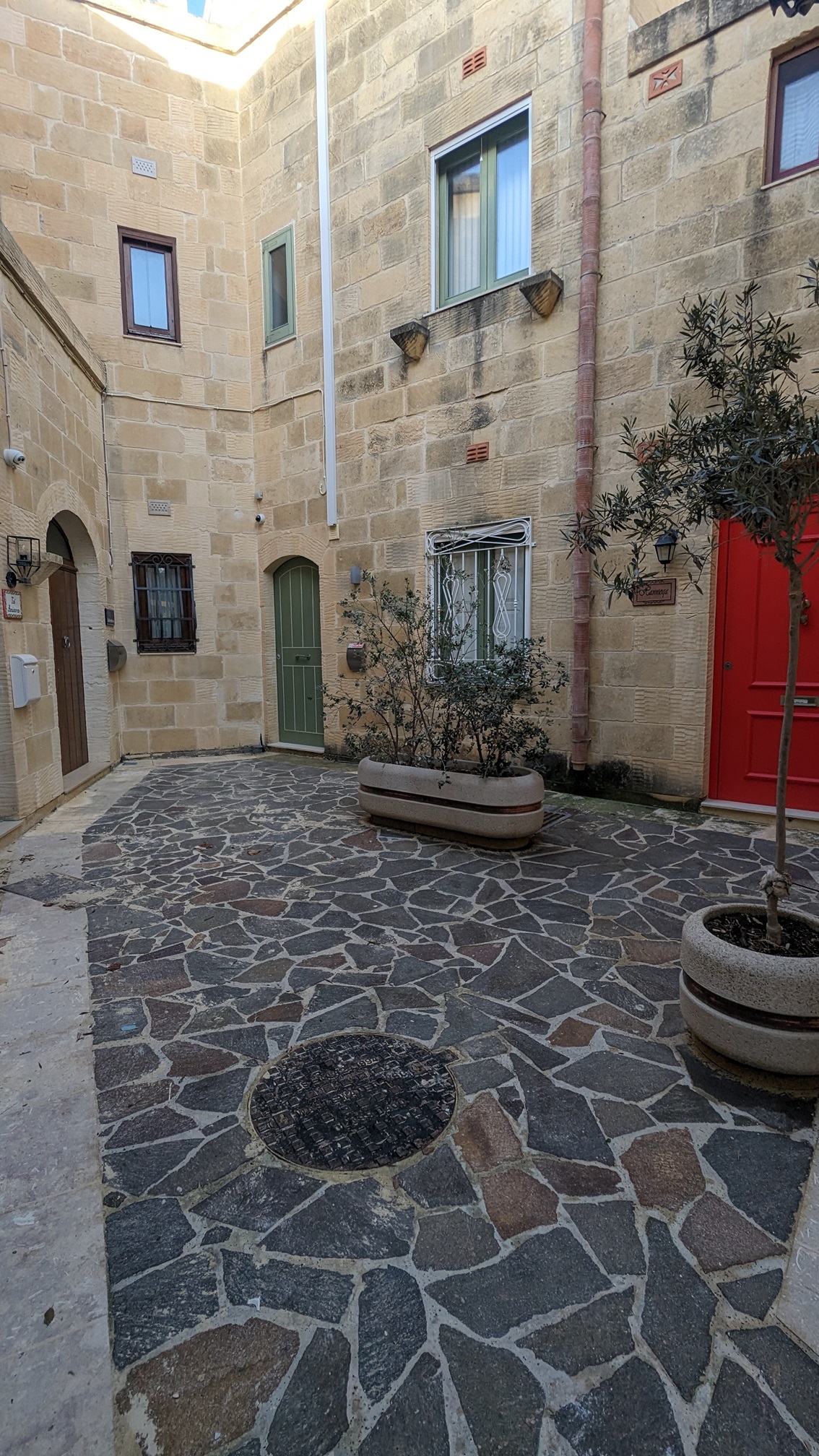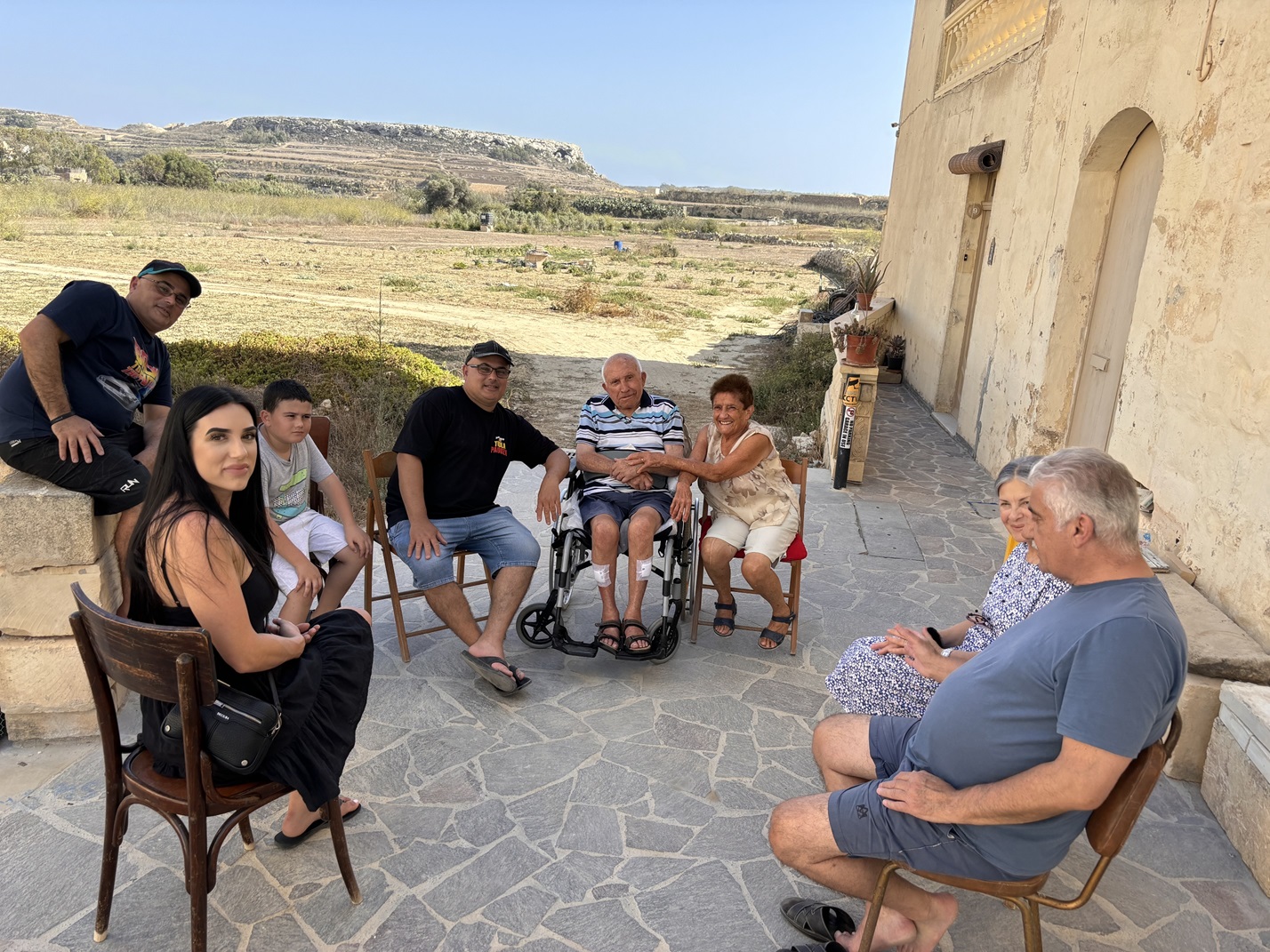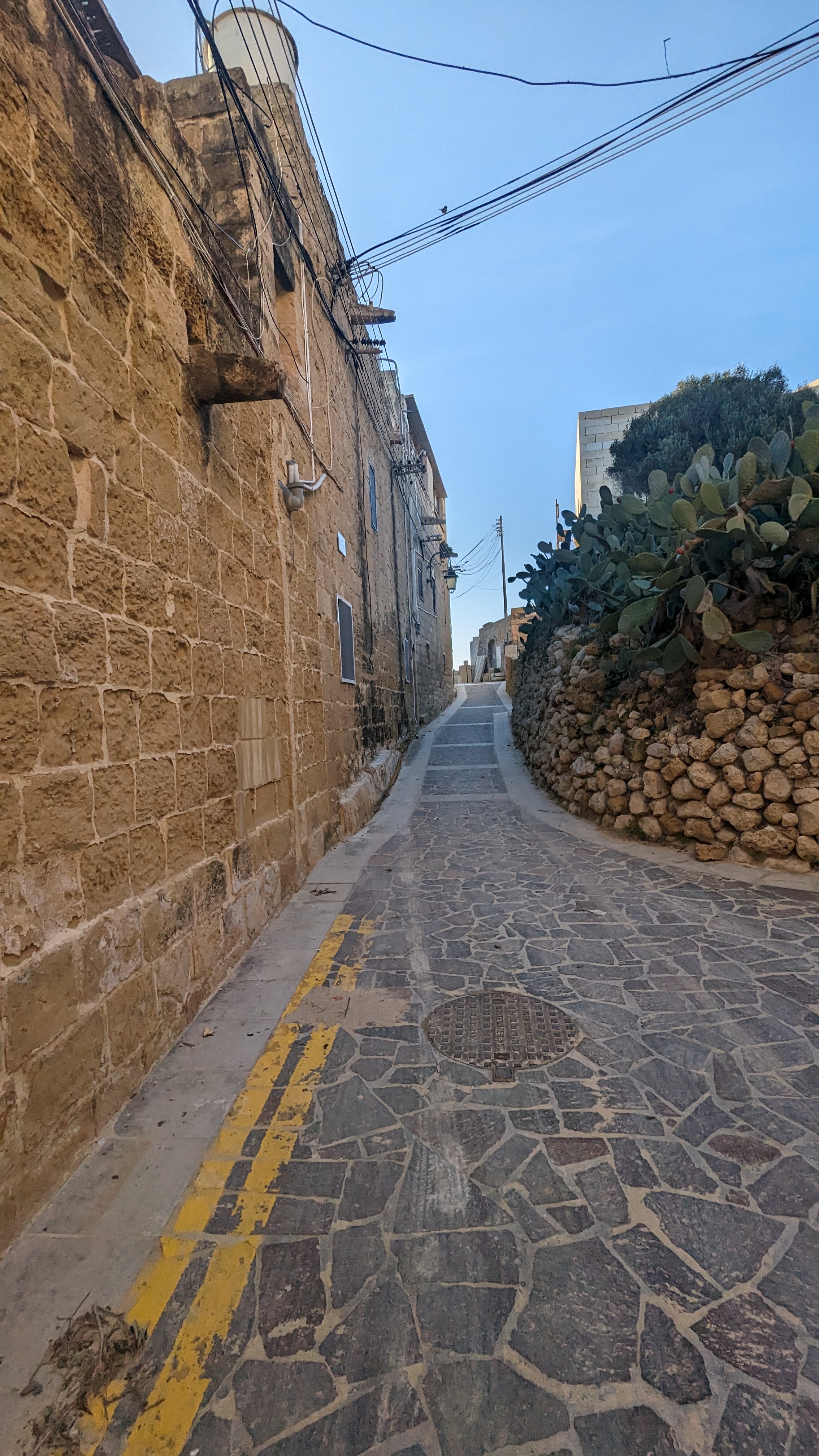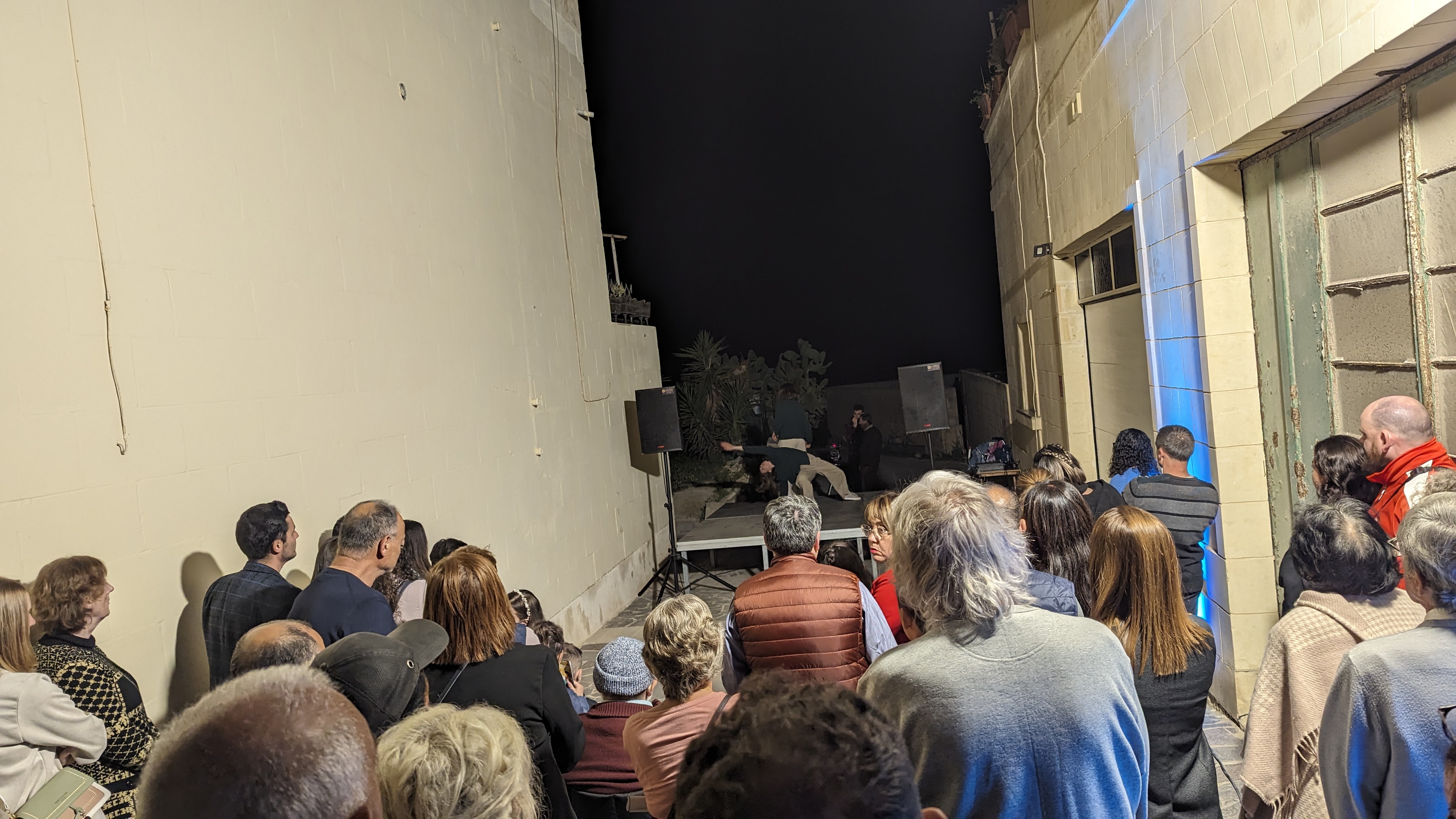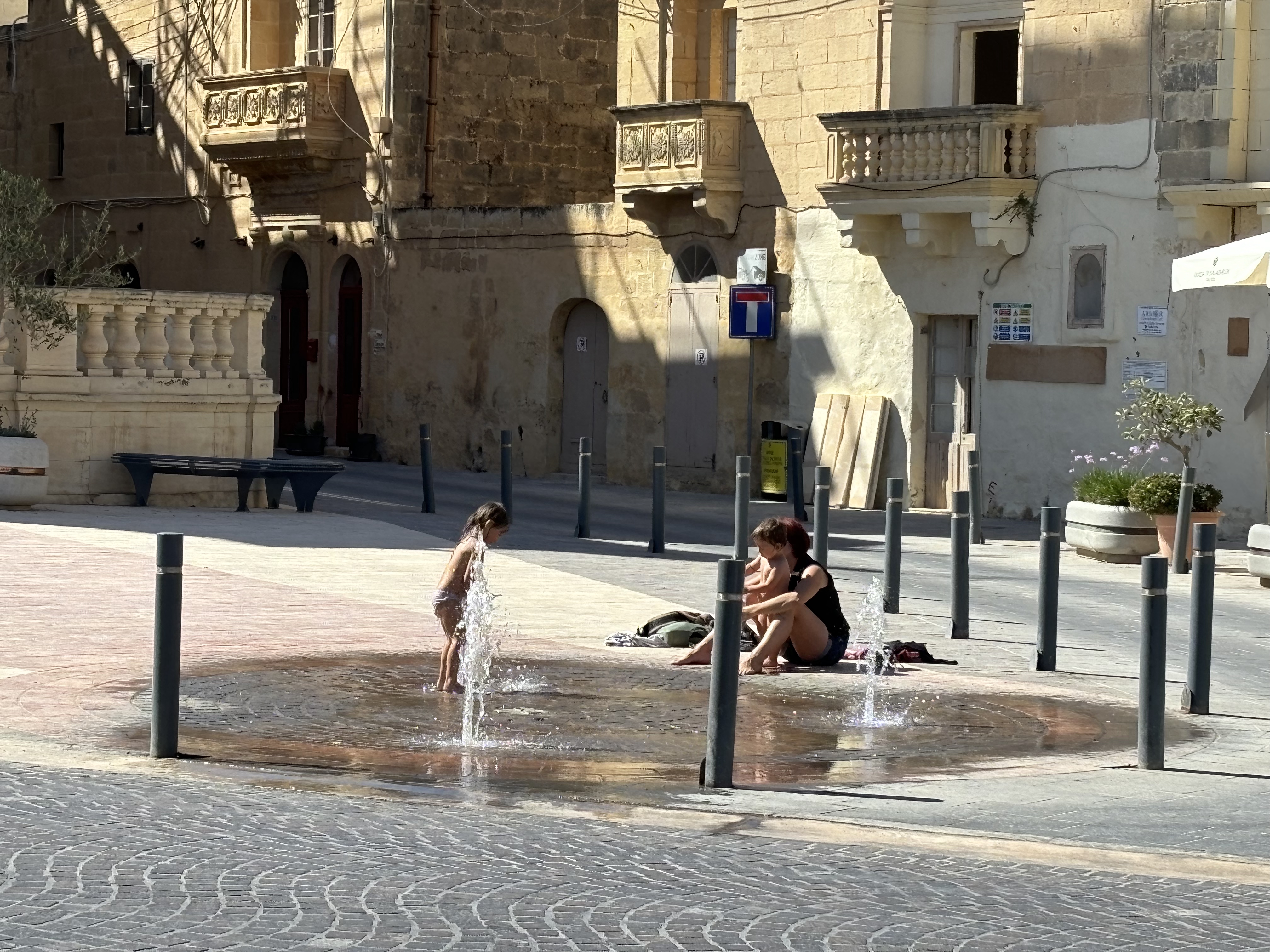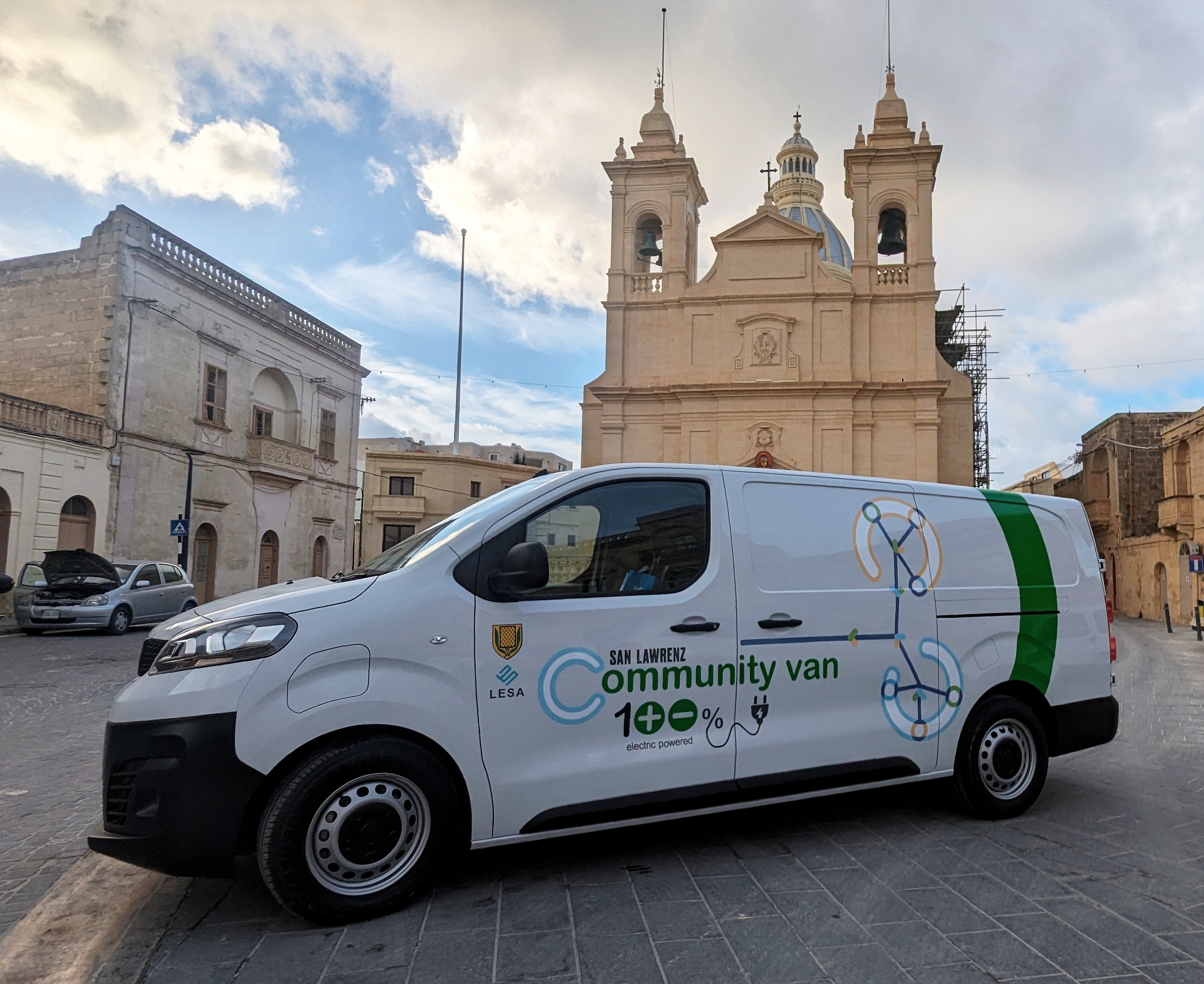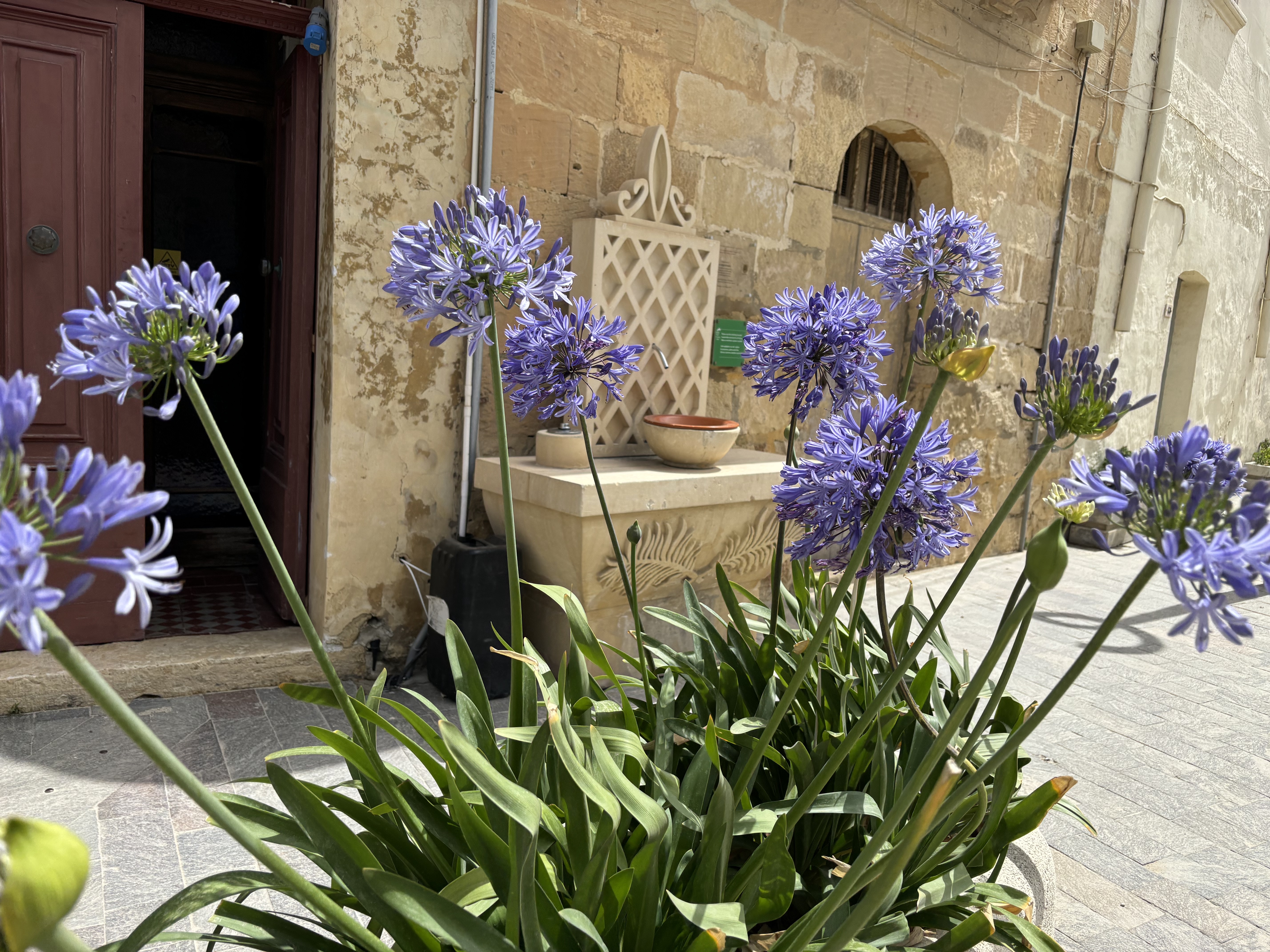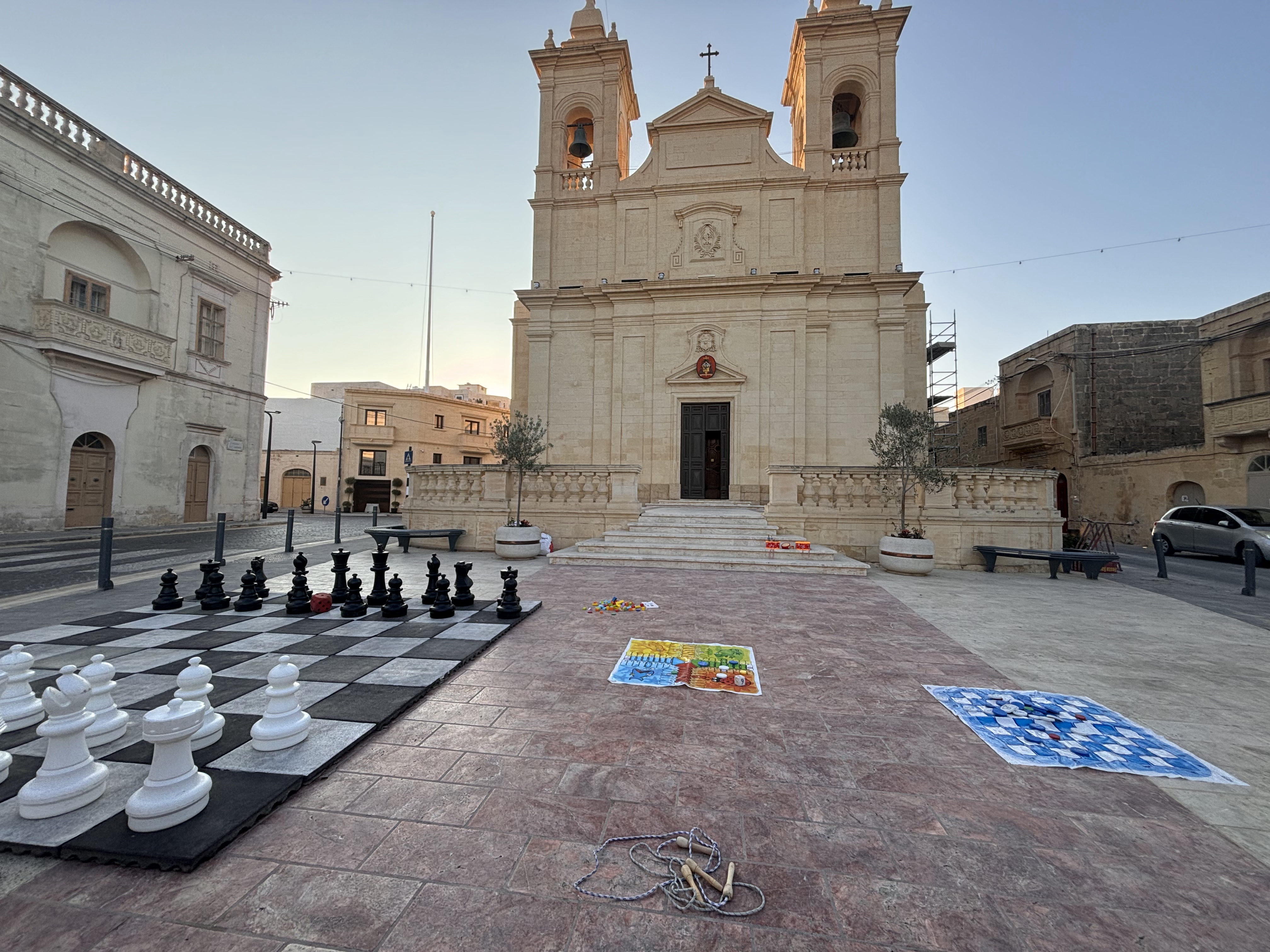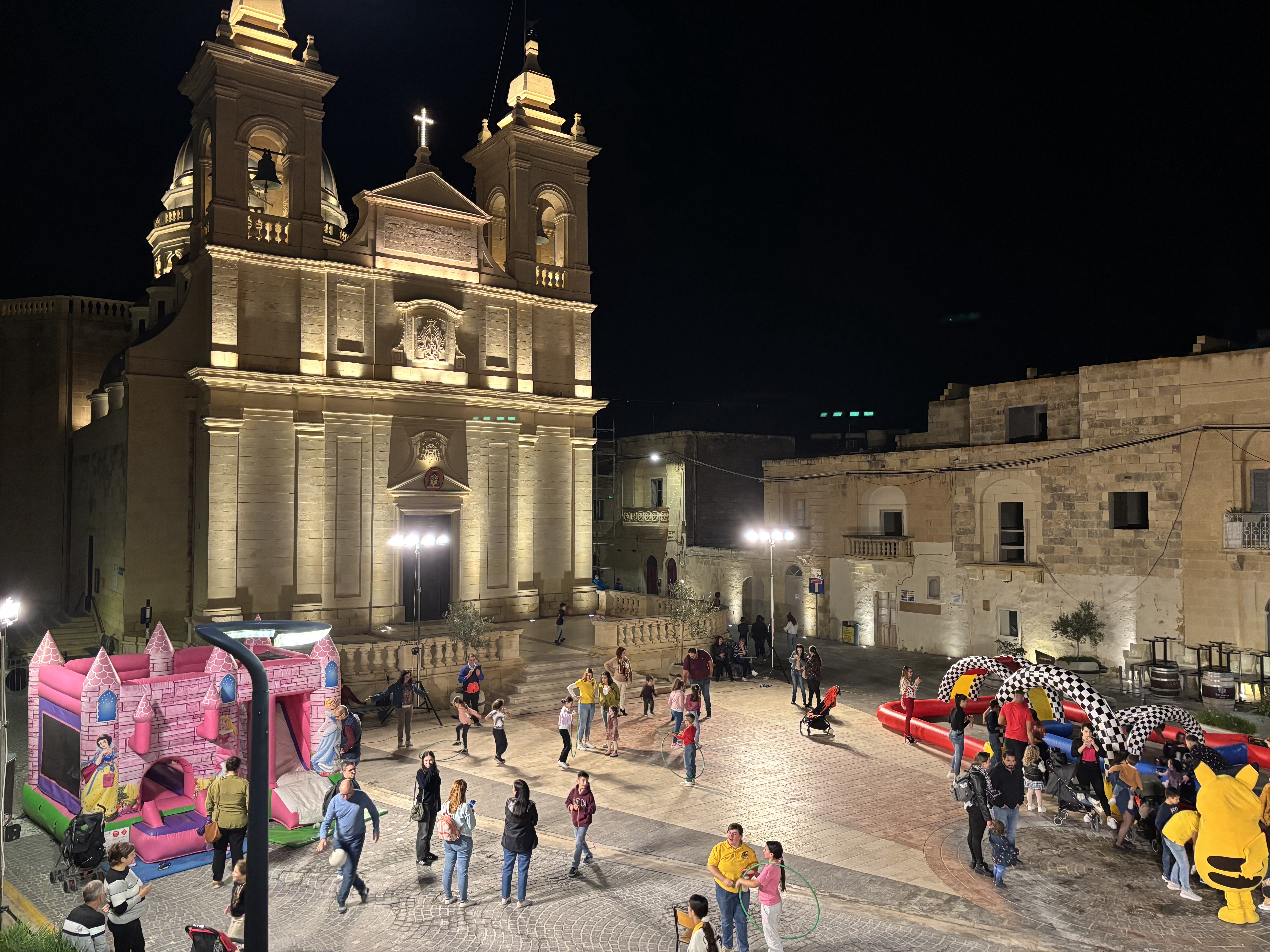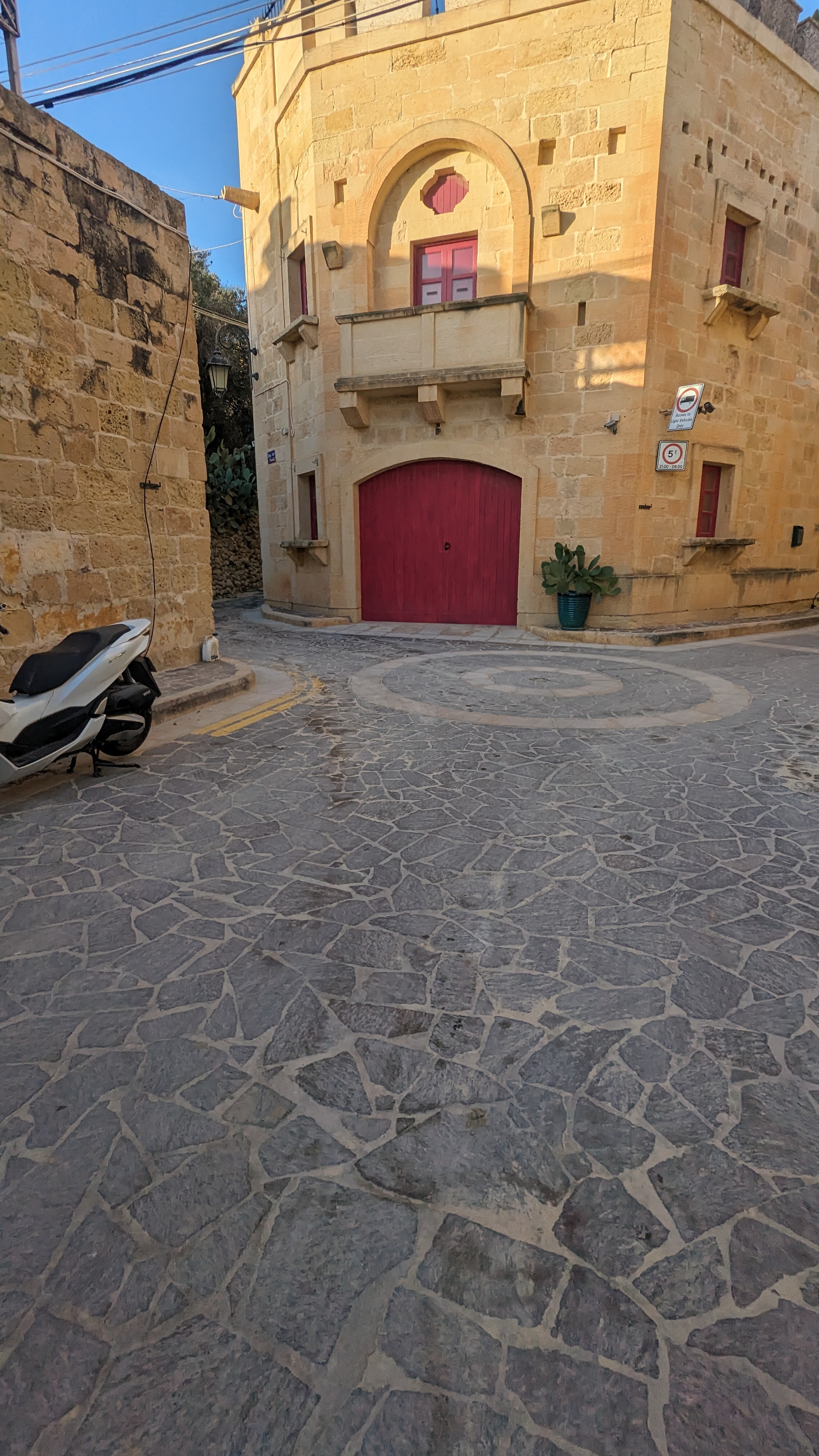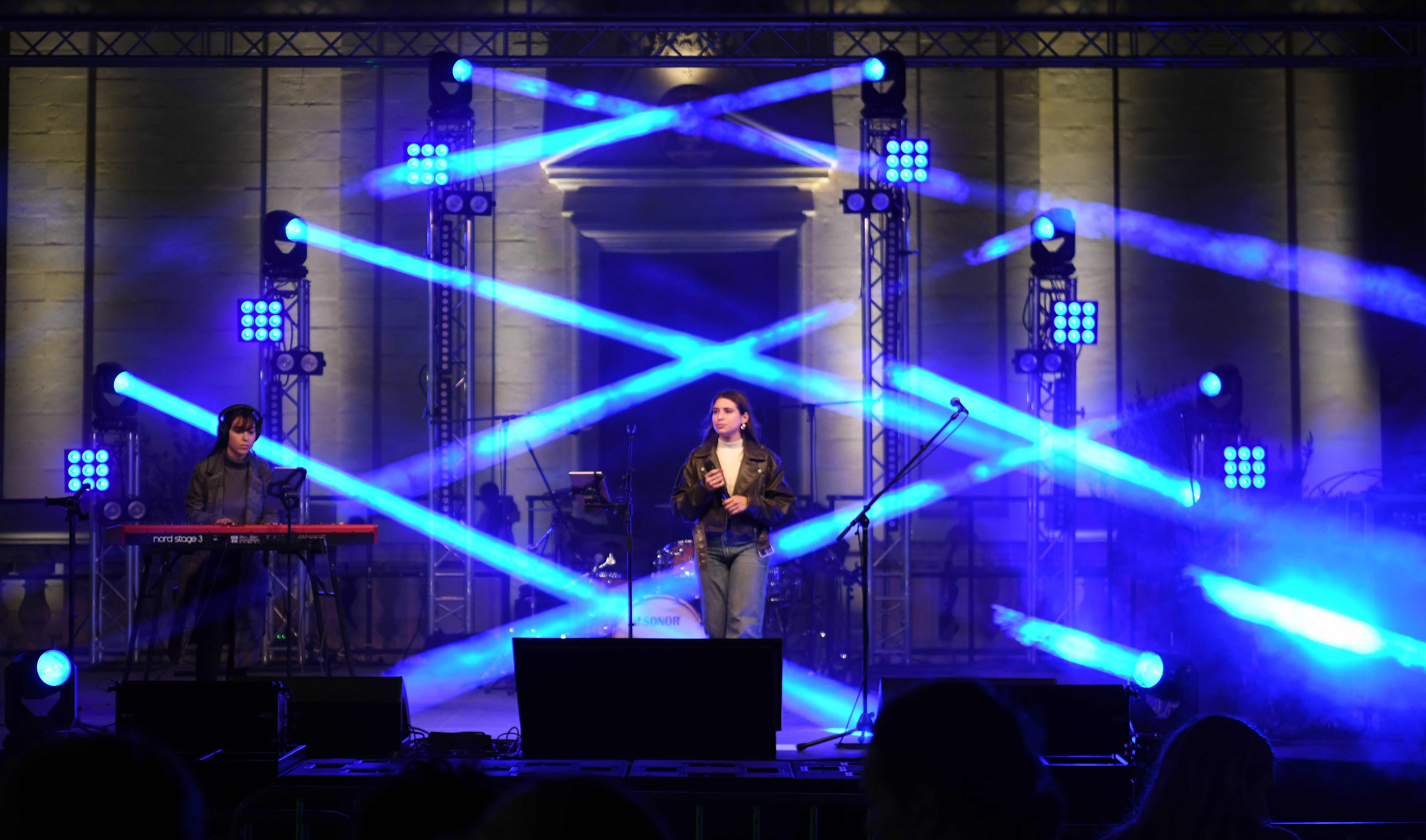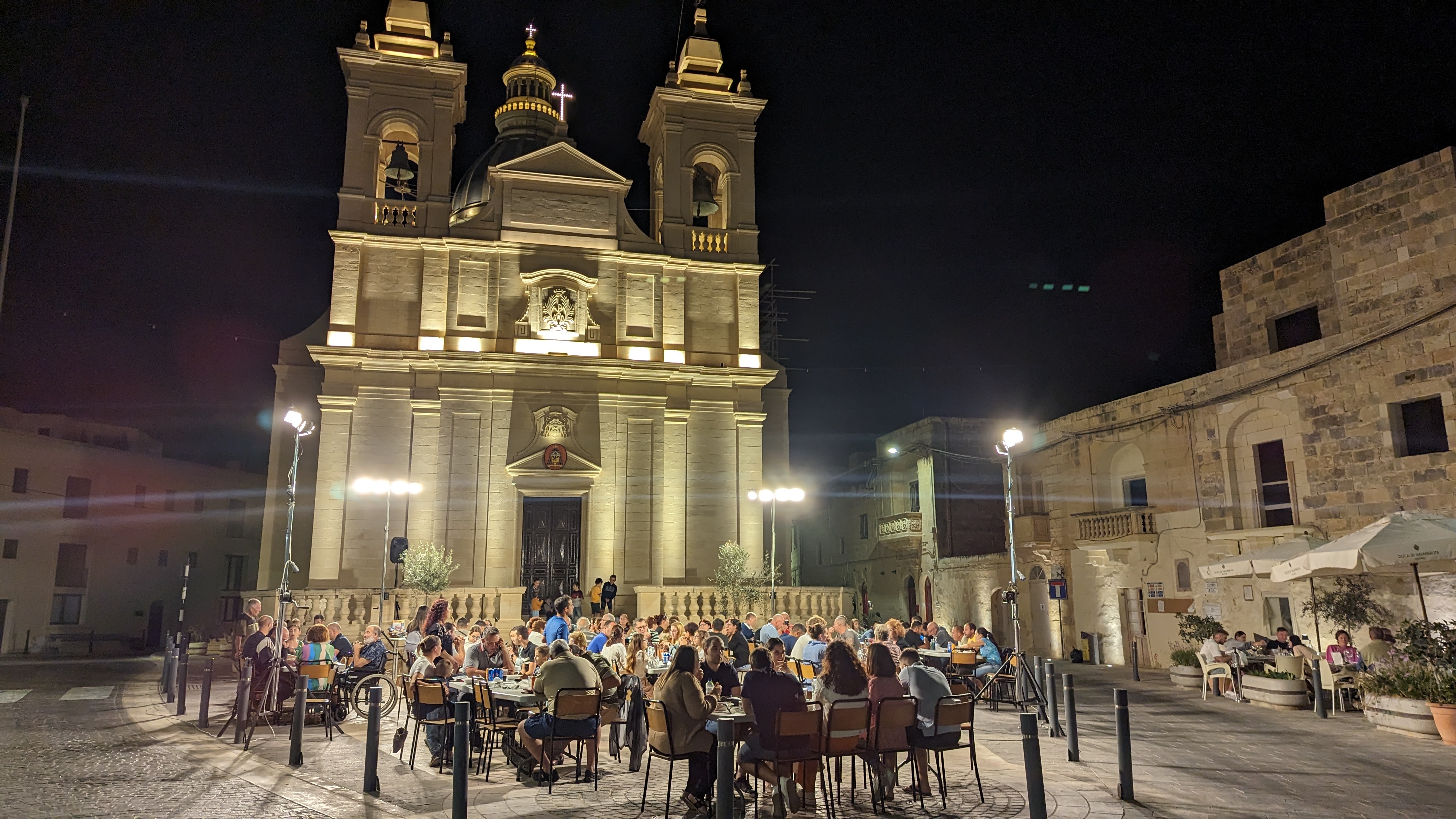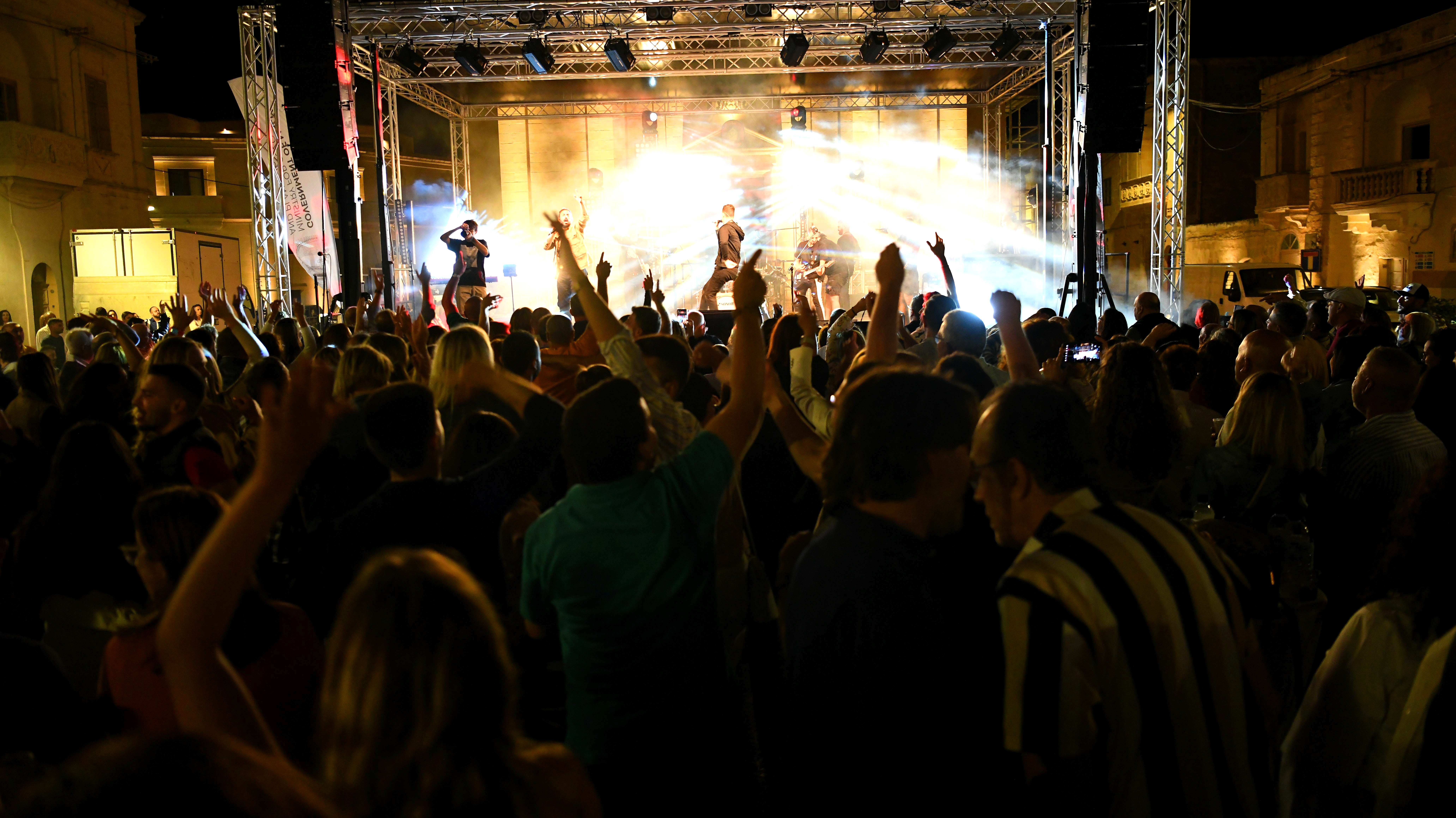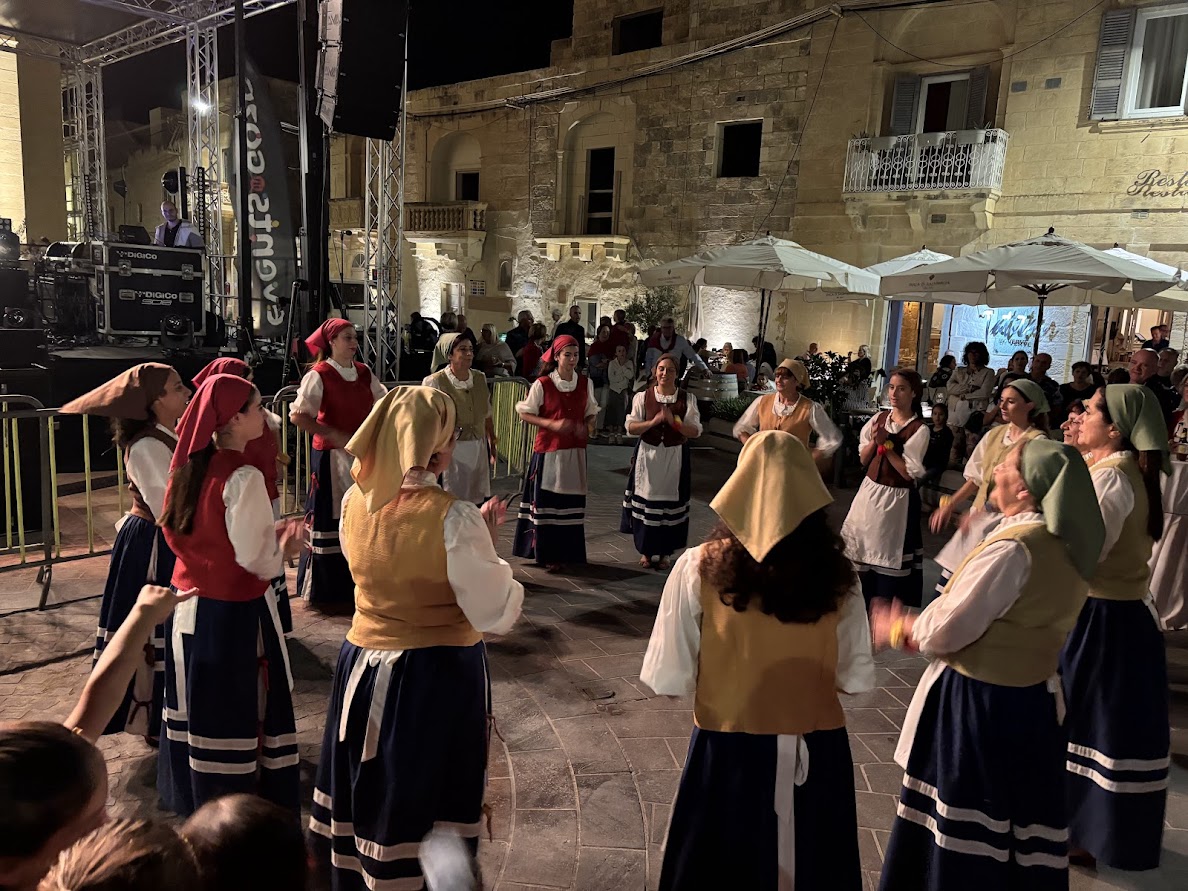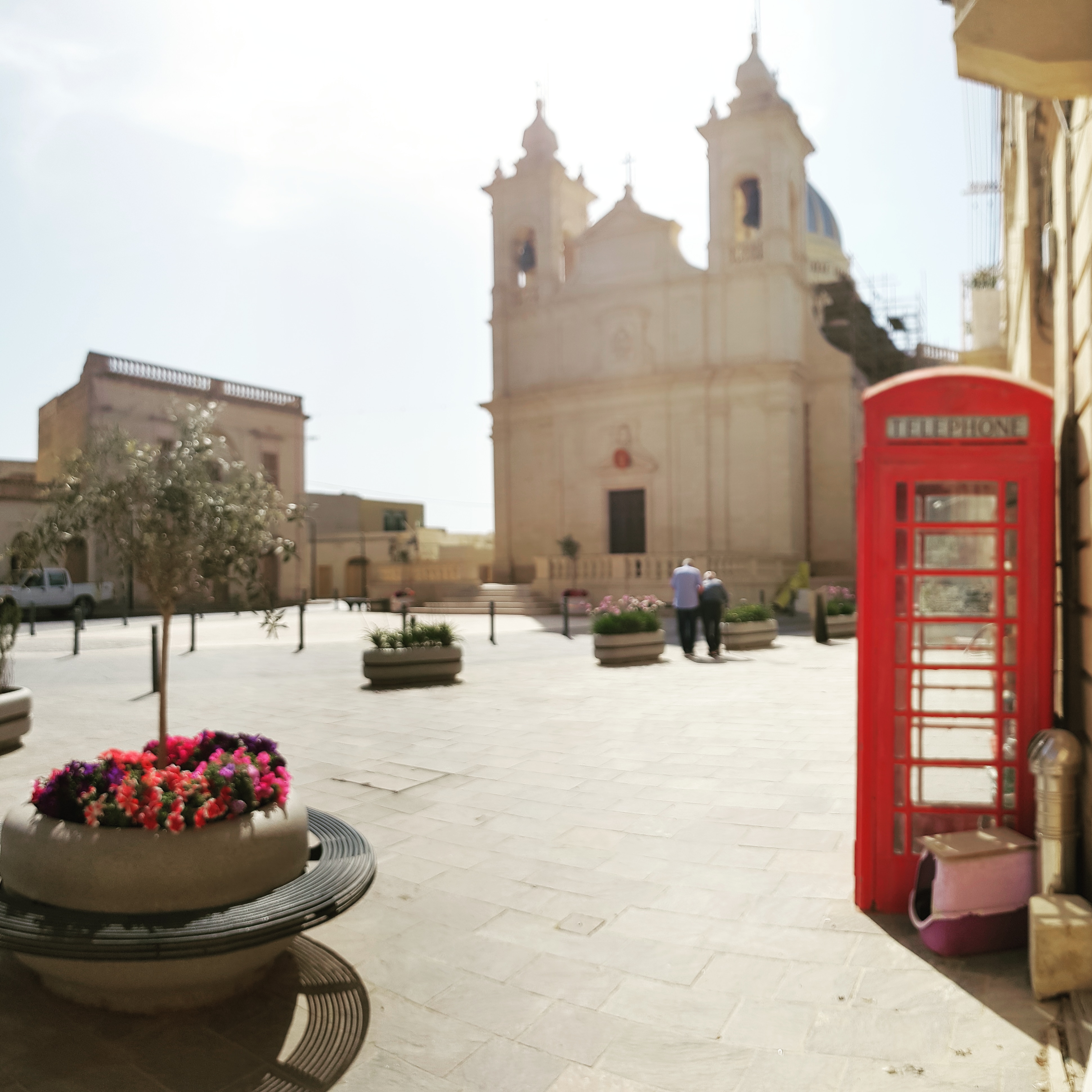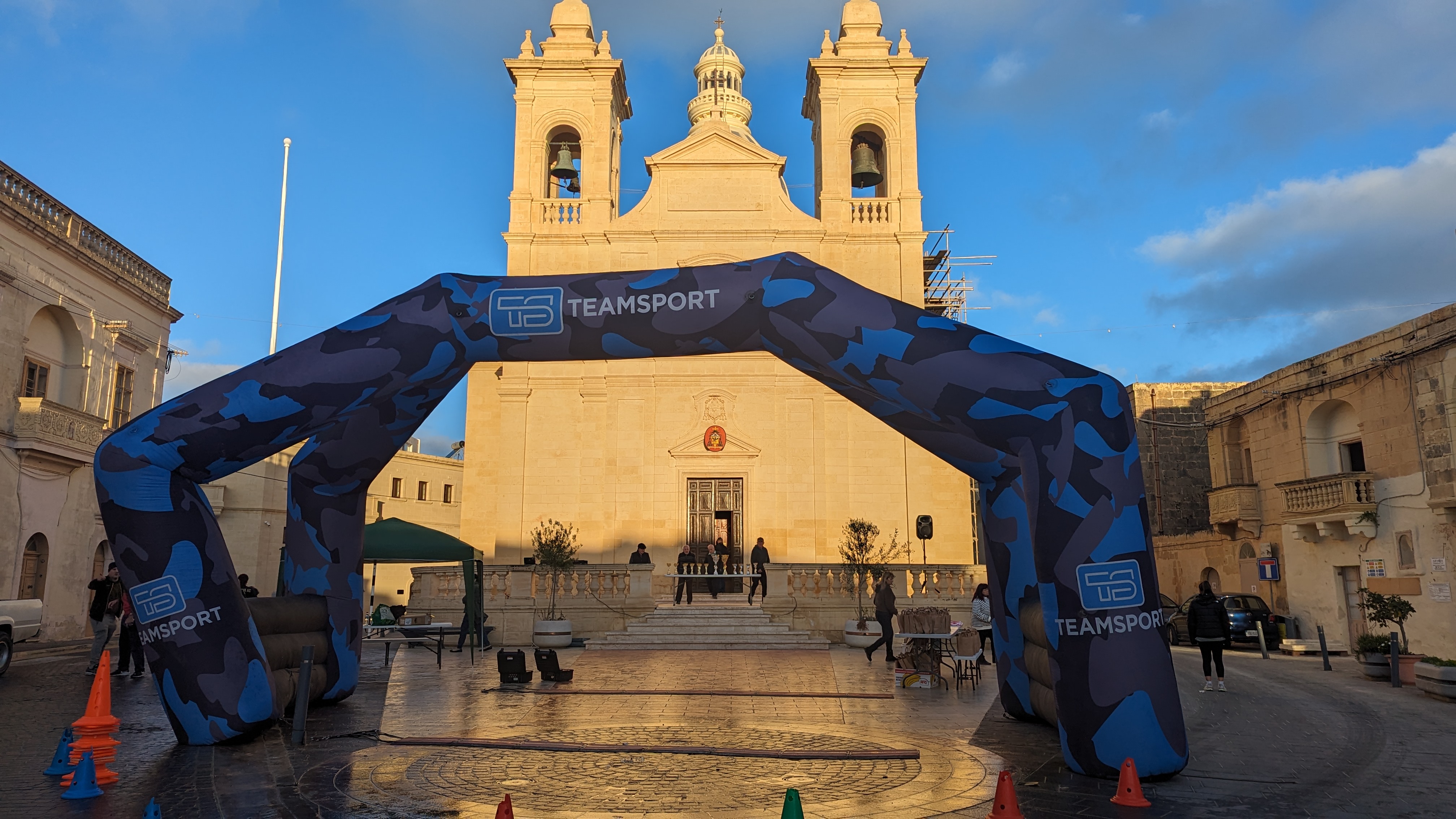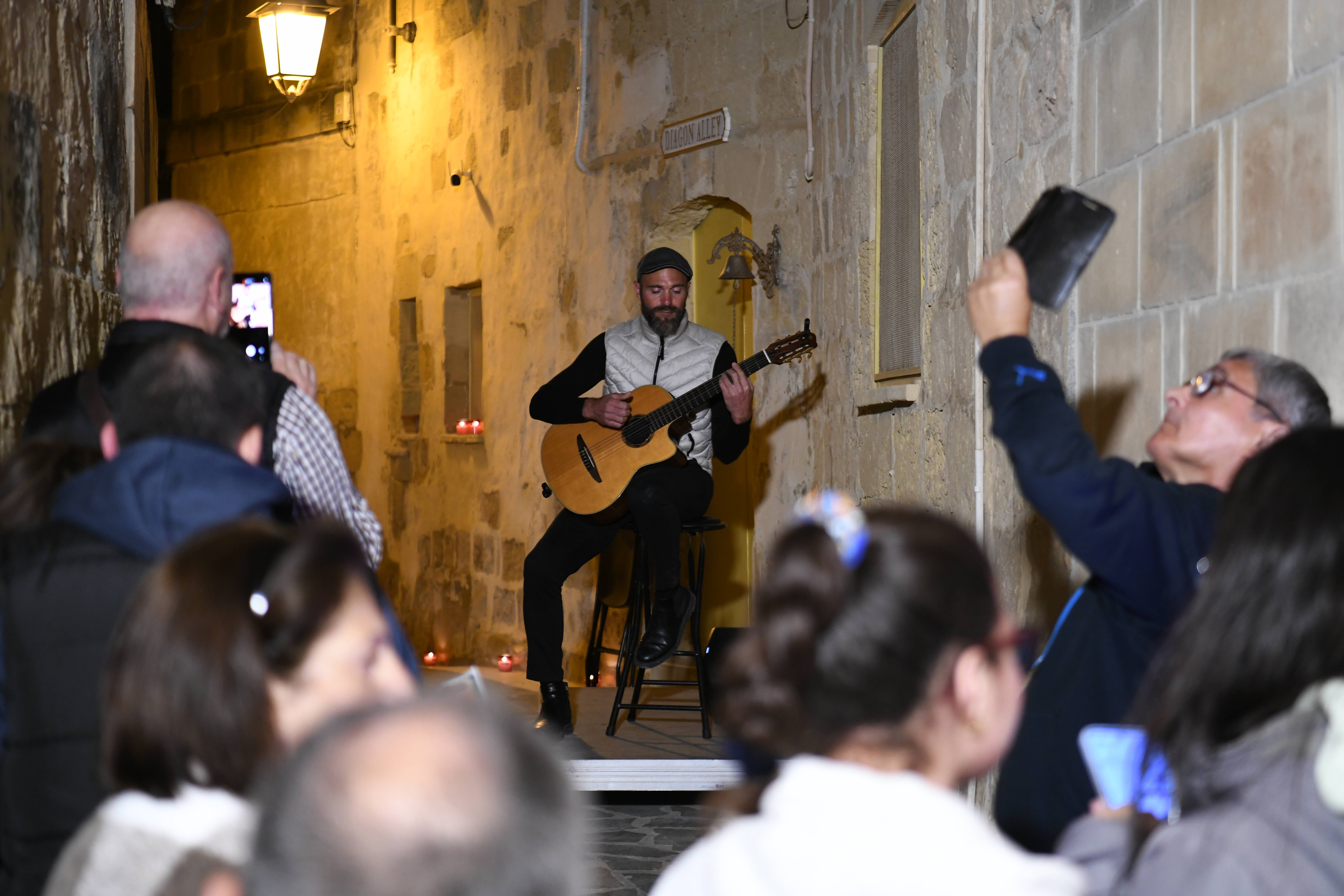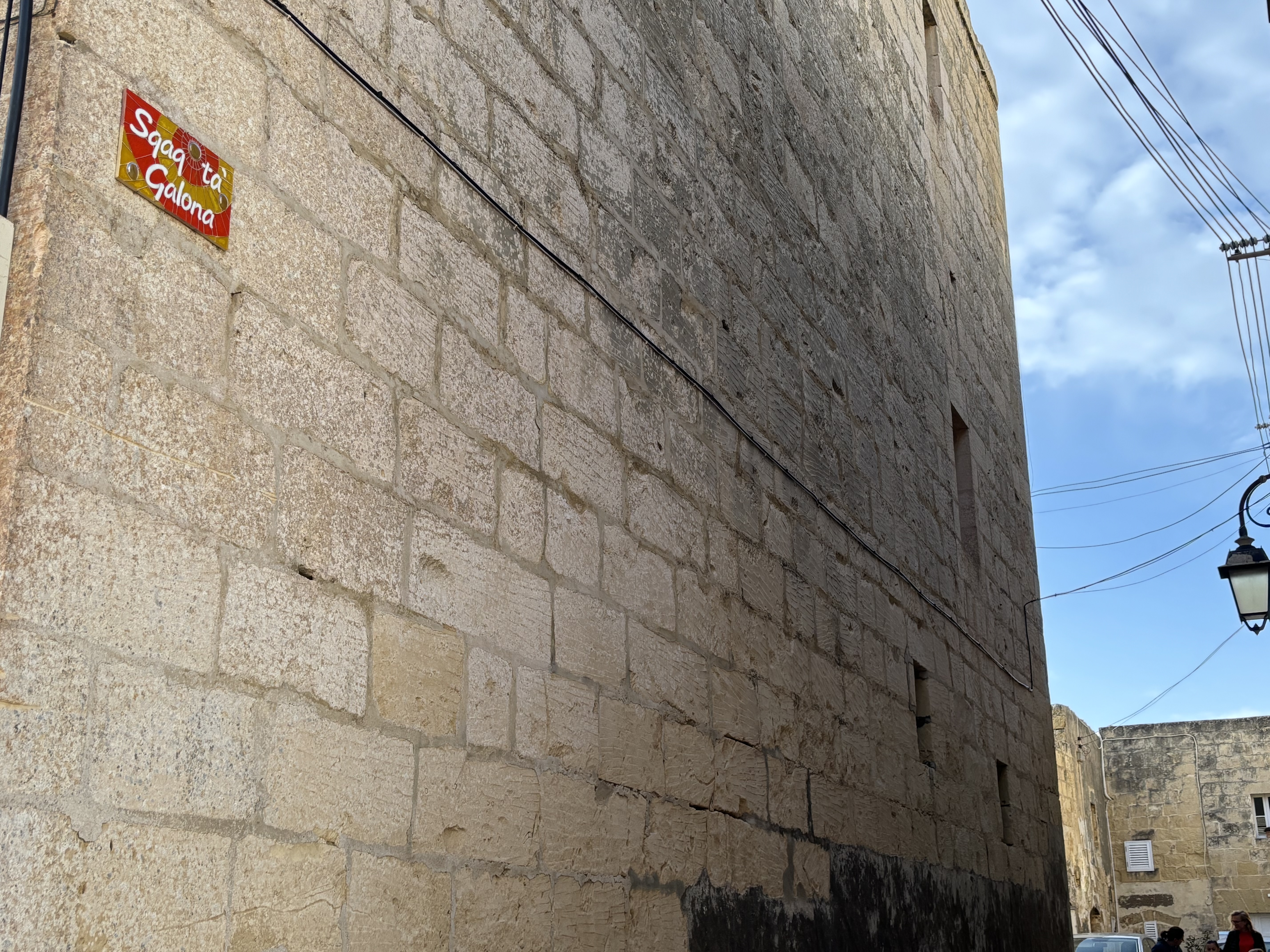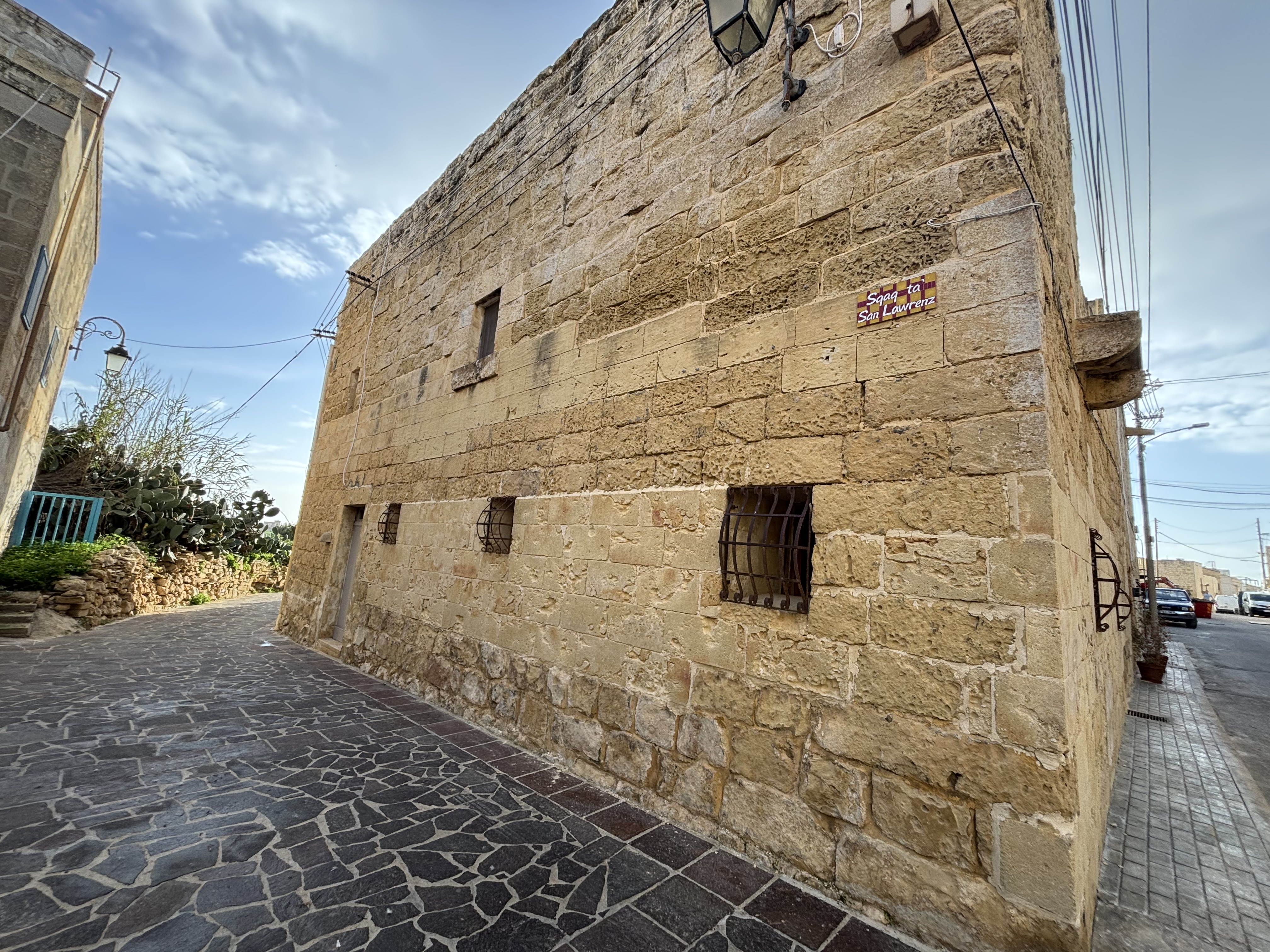San Lawrenz: A Model for Sustainable
San Lawrenz: A Holistic Regeneration Model for Sustainable and Inclusive Rural Living
San Lawrenz has transformed from a passing point to a vibrant community hub through a holistic regeneration project. By revitalizing public spaces, restoring cultural heritage, and fostering community-driven events, the village now thrives as a sustainable and inclusive destination. With improved infrastructure, pedestrian-friendly areas, and cultural initiatives, San Lawrenz celebrates its unique identity while welcoming new generations and visitors to experience its rich heritage.
Malta
The Village of San Lawrenz in Gozo Malta
Prototype level
Yes
Yes
Yes
Yes
EAFRD : European Agricultural Fund for Rural Development
Together with EAFRD we used the ERDF fund.
No
MT02654: San Lawrenz (MT)
San Lawrenz's regeneration project aims to transform the village into a vibrant, sustainable, and inclusive community. Traditionally seen as a passage to Dwejra, the initiative repositions San Lawrenz as a destination in its own right, strengthening local identity and fostering a sense of belonging.
Target Groups
The initiative benefits residents, local businesses, farmers, cultural organizations, and visitors. It supports intergenerational exchange, encourages social interaction, and attracts sustainable tourism.
Specific Objectives
- Enhance Public Spaces: Develop a pedestrian-friendly piazza, restore alleys, and create gathering places to foster community engagement.
- Preserve Cultural Heritage: Restore the parish church, organ, and historic paintings by renowned artists like Giuseppe Cali and Attilio Polombi.
- Strengthen Local Economy: Encourage investments in quality restaurants, boutique accommodations, and cultural tourism through events like Sqaqien and Swejjaq.
- Improve Infrastructure: Surface long-neglected roads and alleys, improving accessibility for residents, visitors, and farmers.
- Promote Community Engagement: Organize annual cultural activities, sports events, and community gatherings to strengthen social cohesion.
Expected Outcomes
- A revitalized village center that attracts both locals and tourists.
- Increased economic opportunities through sustainable businesses and events.
- Stronger community bonds through inclusive public spaces and cultural activities.
- Enhanced appreciation and preservation of San Lawrenz’s heritage.
- A replicable model for rural regeneration focused on sustainability, inclusivity, and cultural identity.
Target Groups
The initiative benefits residents, local businesses, farmers, cultural organizations, and visitors. It supports intergenerational exchange, encourages social interaction, and attracts sustainable tourism.
Specific Objectives
- Enhance Public Spaces: Develop a pedestrian-friendly piazza, restore alleys, and create gathering places to foster community engagement.
- Preserve Cultural Heritage: Restore the parish church, organ, and historic paintings by renowned artists like Giuseppe Cali and Attilio Polombi.
- Strengthen Local Economy: Encourage investments in quality restaurants, boutique accommodations, and cultural tourism through events like Sqaqien and Swejjaq.
- Improve Infrastructure: Surface long-neglected roads and alleys, improving accessibility for residents, visitors, and farmers.
- Promote Community Engagement: Organize annual cultural activities, sports events, and community gatherings to strengthen social cohesion.
Expected Outcomes
- A revitalized village center that attracts both locals and tourists.
- Increased economic opportunities through sustainable businesses and events.
- Stronger community bonds through inclusive public spaces and cultural activities.
- Enhanced appreciation and preservation of San Lawrenz’s heritage.
- A replicable model for rural regeneration focused on sustainability, inclusivity, and cultural identity.
Sustainability
Inclusion
Heritage
Community
Regeneration
The regeneration of San Lawrenz prioritizes environmental sustainability by preserving its natural and built heritage while fostering a resilient, eco-conscious community. The initiative reduces the environmental impact of human activities through infrastructure upgrades that promote pedestrian-friendly spaces, encourage local investment, and support sustainable tourism.
Key Objectives & Implementation
-Eco-Friendly Infrastructure: The resurfacing of roads and alleys improved accessibility while preserving the village’s rural charm. The pedestrian-focused piazza reduces traffic congestion, encourages walking, and enhances air quality.
- Heritage Preservation: The restoration of the parish church, organ, and historic paintings protects invaluable cultural assets, ensuring their legacy for future generations.
- Sustainable Agriculture & Local Economy: Upgraded alleys improved farmers' access to fields, encouraging sustainable farming and preserving agricultural traditions. Events like Swejjaq promote local artisans and food producers, supporting circular economy principles.
- Nature-Based Solutions: Green spaces and public areas enhance biodiversity and community well-being, creating spaces for social interaction while respecting the natural landscape.
Exemplary Character
San Lawrenz serves as a model for other rural communities by integrating environmental sustainability with cultural and social regeneration. By revitalizing historic structures, investing in eco-friendly public spaces, and supporting sustainable local businesses, the initiative balances tradition with innovation. The project demonstrates how small villages can thrive while respecting their environment, making it a scalable and replicable example for sustainable rural development.
Key Objectives & Implementation
-Eco-Friendly Infrastructure: The resurfacing of roads and alleys improved accessibility while preserving the village’s rural charm. The pedestrian-focused piazza reduces traffic congestion, encourages walking, and enhances air quality.
- Heritage Preservation: The restoration of the parish church, organ, and historic paintings protects invaluable cultural assets, ensuring their legacy for future generations.
- Sustainable Agriculture & Local Economy: Upgraded alleys improved farmers' access to fields, encouraging sustainable farming and preserving agricultural traditions. Events like Swejjaq promote local artisans and food producers, supporting circular economy principles.
- Nature-Based Solutions: Green spaces and public areas enhance biodiversity and community well-being, creating spaces for social interaction while respecting the natural landscape.
Exemplary Character
San Lawrenz serves as a model for other rural communities by integrating environmental sustainability with cultural and social regeneration. By revitalizing historic structures, investing in eco-friendly public spaces, and supporting sustainable local businesses, the initiative balances tradition with innovation. The project demonstrates how small villages can thrive while respecting their environment, making it a scalable and replicable example for sustainable rural development.
The regeneration of San Lawrenz enhances its aesthetic appeal and quality of experience by preserving its cultural identity while creating a more engaging and inviting environment. Through thoughtful design, heritage restoration, and cultural initiatives, the village now offers residents and visitors a deeper emotional and sensory connection to its unique character.
Key Objectives & Implementation
Heritage Restoration & Artistic Preservation: The meticulous restoration of the parish church, including its organ and paintings by renowned artists such as Giuseppe Cali and Attilio Polombi, has revitalized the village’s artistic and historical significance.
Public Space Enhancement: The transformation of the village piazza prioritizes pedestrian-friendly design, fostering social interaction and encouraging high-quality dining and leisure experiences. The upgraded alleys preserve the village’s traditional architecture while improving accessibility.
Cultural Vibrancy & Community Engagement: Events such as Sqaqien, which transforms alleyways into cultural stages, and Niesna, celebrating local identity, strengthen the emotional connection between people and place. The integration of art, music, and traditional crafts enriches the cultural fabric of the village.
Sense of Belonging & Well-being: By providing attractive, well-maintained public spaces, the initiative enhances residents’ pride and well-being. Visitors experience the village’s history, culture, and traditions in an immersive, authentic setting.
Exemplary Character
San Lawrenz stands as a model for rural regeneration by seamlessly blending heritage preservation with contemporary needs. The initiative demonstrates how thoughtful design and cultural enrichment can transform a space into an aesthetically pleasing, emotionally engaging, and socially vibrant environment. Its success highlights the potential for small communities to create meaningful experiences that celebrate both tradition and modernity.
Key Objectives & Implementation
Heritage Restoration & Artistic Preservation: The meticulous restoration of the parish church, including its organ and paintings by renowned artists such as Giuseppe Cali and Attilio Polombi, has revitalized the village’s artistic and historical significance.
Public Space Enhancement: The transformation of the village piazza prioritizes pedestrian-friendly design, fostering social interaction and encouraging high-quality dining and leisure experiences. The upgraded alleys preserve the village’s traditional architecture while improving accessibility.
Cultural Vibrancy & Community Engagement: Events such as Sqaqien, which transforms alleyways into cultural stages, and Niesna, celebrating local identity, strengthen the emotional connection between people and place. The integration of art, music, and traditional crafts enriches the cultural fabric of the village.
Sense of Belonging & Well-being: By providing attractive, well-maintained public spaces, the initiative enhances residents’ pride and well-being. Visitors experience the village’s history, culture, and traditions in an immersive, authentic setting.
Exemplary Character
San Lawrenz stands as a model for rural regeneration by seamlessly blending heritage preservation with contemporary needs. The initiative demonstrates how thoughtful design and cultural enrichment can transform a space into an aesthetically pleasing, emotionally engaging, and socially vibrant environment. Its success highlights the potential for small communities to create meaningful experiences that celebrate both tradition and modernity.
The regeneration of San Lawrenz prioritizes inclusion by fostering a sense of belonging, ensuring accessibility, & encouraging active community participation.Through inclusive design, governance, & cultural initiatives, the village has been transformed into a space that welcomes residents & visitors of all backgrounds, strengthening social cohesion and intergenerational exchange.
Key Objectives & Implementation
Accessible & Affordable Public Spaces:The pedestrian-friendly piazza & upgraded alleys provide safe, inclusive spaces where people can gather, socialize,& participate in village life. By prioritizing pedestrians over traffic, the initiative ensures a more welcoming environment for all,including older adults, families, & people with reduced mobility.
Inclusive Governance & Community Engagement: Public consultations,collaboration with NGOs,& involvement of local organizations like the Festa Committee & St Laurence Spurs FC ensured that all voices were heard in the decision-making process. Residents played an active role in shaping the transformation of their village.
Cultural & Social Inclusion:Events such as Sqaqien & Niesna celebrate the village’s diversity, inviting both locals & newcomers to share in cultural traditions. Community dinners, the Christmas Pageant, & the San Lawrenz 5K run bring together people from different backgrounds,fostering stronger social ties.
Supporting Local Economy & Opportunities for All:By revitalizing the village center & encouraging local investments in restaurants, cultural events, & sustainable tourism,the initiative creates economic opportunities for residents, ensuring long-term affordability & a thriving community.
San Lawrenz showcases inclusive rural regeneration, blending accessibility, community engagement, and cultural vibrancy into a sustainable, replicable model for other villages.
Key Objectives & Implementation
Accessible & Affordable Public Spaces:The pedestrian-friendly piazza & upgraded alleys provide safe, inclusive spaces where people can gather, socialize,& participate in village life. By prioritizing pedestrians over traffic, the initiative ensures a more welcoming environment for all,including older adults, families, & people with reduced mobility.
Inclusive Governance & Community Engagement: Public consultations,collaboration with NGOs,& involvement of local organizations like the Festa Committee & St Laurence Spurs FC ensured that all voices were heard in the decision-making process. Residents played an active role in shaping the transformation of their village.
Cultural & Social Inclusion:Events such as Sqaqien & Niesna celebrate the village’s diversity, inviting both locals & newcomers to share in cultural traditions. Community dinners, the Christmas Pageant, & the San Lawrenz 5K run bring together people from different backgrounds,fostering stronger social ties.
Supporting Local Economy & Opportunities for All:By revitalizing the village center & encouraging local investments in restaurants, cultural events, & sustainable tourism,the initiative creates economic opportunities for residents, ensuring long-term affordability & a thriving community.
San Lawrenz showcases inclusive rural regeneration, blending accessibility, community engagement, and cultural vibrancy into a sustainable, replicable model for other villages.
Citizens and civil society played a central role in the regeneration of San Lawrenz, with their involvement shaping both the planning and implementation stages. Public consultations were held throughout the project, ensuring that residents had a direct say in decisions regarding the village's future. This participatory process allowed local stakeholders, including NGOs, businesses, and community groups like the Festa Committee and cultural organizations, to contribute valuable input and ensure diverse perspectives were considered.
The initiative also embraced a multi-level engagement approach, connecting local citizens with broader governance bodies such as the Local Council and EU funding organizations. Through collaborations with local businesses, cultural groups, and even international partners like the Kempinski Hotel, the project successfully engaged a wide range of actors with shared interests in the village’s sustainable development.
Additionally, the transdisciplinary approach integrated knowledge from a variety of fields, including urban planning, conservation, and local traditions. Local farmers, artisans, and residents played an active role in shaping the project, ensuring that the initiative was not just top-down but driven by the needs and expertise of the community.
The impact of this extensive involvement is clear: the regeneration reflects the needs and desires of the people who live there, fostering a deep sense of ownership and pride. This collaborative approach also ensured that the transformation was sustainable, culturally sensitive, and inclusive, with community-driven events and public spaces that continue to enhance social cohesion. The project serves as a model for how citizen involvement can drive meaningful, lasting change in rural communities.
The initiative also embraced a multi-level engagement approach, connecting local citizens with broader governance bodies such as the Local Council and EU funding organizations. Through collaborations with local businesses, cultural groups, and even international partners like the Kempinski Hotel, the project successfully engaged a wide range of actors with shared interests in the village’s sustainable development.
Additionally, the transdisciplinary approach integrated knowledge from a variety of fields, including urban planning, conservation, and local traditions. Local farmers, artisans, and residents played an active role in shaping the project, ensuring that the initiative was not just top-down but driven by the needs and expertise of the community.
The impact of this extensive involvement is clear: the regeneration reflects the needs and desires of the people who live there, fostering a deep sense of ownership and pride. This collaborative approach also ensured that the transformation was sustainable, culturally sensitive, and inclusive, with community-driven events and public spaces that continue to enhance social cohesion. The project serves as a model for how citizen involvement can drive meaningful, lasting change in rural communities.
The regeneration of San Lawrenz involved a multi-level engagement strategy, ensuring active participation from stakeholders at local, regional, national, and European levels.
At the local level, the project was shaped by the community itself. Residents, local NGOs, and community groups played a central role in the decision-making process. Public consultations were held to gather feedback and ensure that the regeneration aligned with the needs and desires of the village population. Local businesses and cultural organizations also contributed by offering their expertise and resources, ensuring that the project reflected the village’s authentic character.
At the regional level, the Local Council played a critical role in coordinating the initiative. They worked closely with other regional authorities to align the project with broader development goals. The involvement of local government also ensured that the regeneration was integrated into the region’s long-term strategic planning, securing continued support and investment in infrastructure and public spaces.
On the national level, the initiative benefited from collaborations with national cultural and heritage organizations. Their expertise in preserving local traditions and cultural heritage ensured that the village’s unique identity was maintained throughout the regeneration. National funding and policy frameworks provided financial support and alignment with broader national goals for sustainable development.
At the European level, EU funding bodies were instrumental in supporting the project financially. The regeneration of San Lawrenz aligned with the EU’s priorities for sustainable, inclusive, and culturally rich rural development. EU grants and initiatives enabled the project to achieve its ambitious goals, while fostering collaboration between various stakeholders across multiple levels of governance. This multi-level partnership ensured a holistic and impactful approach to the regeneration.
At the local level, the project was shaped by the community itself. Residents, local NGOs, and community groups played a central role in the decision-making process. Public consultations were held to gather feedback and ensure that the regeneration aligned with the needs and desires of the village population. Local businesses and cultural organizations also contributed by offering their expertise and resources, ensuring that the project reflected the village’s authentic character.
At the regional level, the Local Council played a critical role in coordinating the initiative. They worked closely with other regional authorities to align the project with broader development goals. The involvement of local government also ensured that the regeneration was integrated into the region’s long-term strategic planning, securing continued support and investment in infrastructure and public spaces.
On the national level, the initiative benefited from collaborations with national cultural and heritage organizations. Their expertise in preserving local traditions and cultural heritage ensured that the village’s unique identity was maintained throughout the regeneration. National funding and policy frameworks provided financial support and alignment with broader national goals for sustainable development.
At the European level, EU funding bodies were instrumental in supporting the project financially. The regeneration of San Lawrenz aligned with the EU’s priorities for sustainable, inclusive, and culturally rich rural development. EU grants and initiatives enabled the project to achieve its ambitious goals, while fostering collaboration between various stakeholders across multiple levels of governance. This multi-level partnership ensured a holistic and impactful approach to the regeneration.
The design and implementation of the San Lawrenz regeneration initiative incorporated a wide range of disciplines and knowledge fields, ensuring a holistic and well-rounded approach. These included urban planning, conservation, history, cultural heritage, agriculture, and community development.
Urban planning experts were central in designing pedestrian-friendly spaces and enhancing accessibility while preserving the village’s historic layout. Conservationists worked to restore and protect the village’s architectural heritage, including the parish church and other historic landmarks. Historians and cultural heritage specialists* ensured that the regeneration preserved the authenticity and identity of the village, integrating elements of local art, such as the restoration of paintings and others.
Agricultural knowledge was reflected in the improvement of access to farmland, ensuring the continued sustainability of local food production.Local artisans and builders contributed their traditional skills to the restoration, integrating knowledge of local materials and techniques to maintain authenticity.
These disciplines interacted through a collaborative, transdisciplinary approach. For example, urban planners and conservationists worked closely to balance modern infrastructure needs with the preservation of cultural assets. Farmers and community groups were involved in decision-making processes, ensuring that agricultural and social considerations were integrated into the development of public spaces and infrastructure.
The added value of this interdisciplinary collaboration was the creation of a regeneration project that was both sustainable and culturally sensitive. It ensured that all aspects of the village—its physical environment, cultural identity, and community life—were thoughtfully considered and enhanced. This approach led to a more integrated and meaningful transformation that truly reflected the needs and aspirations of the people of San Lawrenz
Urban planning experts were central in designing pedestrian-friendly spaces and enhancing accessibility while preserving the village’s historic layout. Conservationists worked to restore and protect the village’s architectural heritage, including the parish church and other historic landmarks. Historians and cultural heritage specialists* ensured that the regeneration preserved the authenticity and identity of the village, integrating elements of local art, such as the restoration of paintings and others.
Agricultural knowledge was reflected in the improvement of access to farmland, ensuring the continued sustainability of local food production.Local artisans and builders contributed their traditional skills to the restoration, integrating knowledge of local materials and techniques to maintain authenticity.
These disciplines interacted through a collaborative, transdisciplinary approach. For example, urban planners and conservationists worked closely to balance modern infrastructure needs with the preservation of cultural assets. Farmers and community groups were involved in decision-making processes, ensuring that agricultural and social considerations were integrated into the development of public spaces and infrastructure.
The added value of this interdisciplinary collaboration was the creation of a regeneration project that was both sustainable and culturally sensitive. It ensured that all aspects of the village—its physical environment, cultural identity, and community life—were thoughtfully considered and enhanced. This approach led to a more integrated and meaningful transformation that truly reflected the needs and aspirations of the people of San Lawrenz
The regeneration of San Lawrenz stands out as an innovative approach to rural development, diverging from mainstream practices that typically prioritize infrastructure improvements without considering cultural, social, & environmental integration. Unlike conventional village restoration projects that focus solely on physical upgrades, San Lawrenz combined heritage preservation with community-building & sustainable development.
A key innovation was the creation of a pedestrian-friendly piazza and revitalized alleys that not only improved the village's infrastructure but also fostered social interaction and community engagement. These spaces encouraged cultural events and public gatherings, transforming the village into a vibrant hub where locals and visitors can connect.This focus on creating spaces for people, rather than just vehicles, reflects a shift from the typical car-centric rural development approach.
The integration of cultural programming within public spaces further distinguishes this project. Traditional heritage elements, such as the restoration of historic art & the preservation of local landmarks, were seamlessly incorporated into modern community activities, creating a dynamic, living cultural environment. Festivals, exhibitions, and community events were integrated into the regeneration process, making heritage a central part of daily life.
Moreover, the project prioritized sustainability in a holistic manner, not just through eco-friendly infrastructure but also by enhancing local food production and preserving agricultural land. It also encouraged eco-tourism by improving access to the village’s natural & cultural assets, reducing reliance on vehicles and promoting environmentally responsible tourism.
The regeneration of San Lawrenz combines tradition with modernity, integrating environmental, social, and cultural sustainability. Engaging diverse stakeholders, it creates an innovative and replicable model for rural regeneration.
A key innovation was the creation of a pedestrian-friendly piazza and revitalized alleys that not only improved the village's infrastructure but also fostered social interaction and community engagement. These spaces encouraged cultural events and public gatherings, transforming the village into a vibrant hub where locals and visitors can connect.This focus on creating spaces for people, rather than just vehicles, reflects a shift from the typical car-centric rural development approach.
The integration of cultural programming within public spaces further distinguishes this project. Traditional heritage elements, such as the restoration of historic art & the preservation of local landmarks, were seamlessly incorporated into modern community activities, creating a dynamic, living cultural environment. Festivals, exhibitions, and community events were integrated into the regeneration process, making heritage a central part of daily life.
Moreover, the project prioritized sustainability in a holistic manner, not just through eco-friendly infrastructure but also by enhancing local food production and preserving agricultural land. It also encouraged eco-tourism by improving access to the village’s natural & cultural assets, reducing reliance on vehicles and promoting environmentally responsible tourism.
The regeneration of San Lawrenz combines tradition with modernity, integrating environmental, social, and cultural sustainability. Engaging diverse stakeholders, it creates an innovative and replicable model for rural regeneration.
The methodology behind the regeneration of San Lawrenz is rooted in a holistic, participatory, and sustainable approach. Central to this process is community involvement at every stage, ensuring that the needs, values, and aspirations of residents are reflected in the design and implementation. Public consultations and collaborations with local NGOs, cultural organizations, and businesses were conducted to gather input and ensure that the regeneration aligned with the community’s vision.
The project employed a multi-disciplinary approach, bringing together experts from urban planning, conservation, agriculture, and cultural heritage. This allowed for a balanced integration of modern infrastructure with the preservation of the village's historic character. Urban planners focused on improving accessibility through pedestrian-friendly spaces, while conservationists ensured that heritage sites and landmarks were preserved and restored.
A key aspect of the methodology was the focus on sustainability. The initiative improved infrastructure in ways that minimized environmental impact, encouraged eco-tourism, and promoted local food production by enhancing access to agricultural land. This approach emphasized eco-friendly materials, energy-efficient solutions, and the preservation of natural landscapes.
Additionally, the project adopted a multi-level governance strategy, collaborating with stakeholders from the local to the European level. This ensured that the regeneration aligned with broader policy frameworks and secured funding from various sources, including EU grants. The phased implementation allowed for gradual, long-term improvements, ensuring the project’s feasibility and sustainability over time.
By combining community-driven design, cross-disciplinary collaboration, and a focus on sustainability, the methodology used in San Lawrenz’s regeneration has created a model for rural development that is both inclusive and forward-thinking.
The project employed a multi-disciplinary approach, bringing together experts from urban planning, conservation, agriculture, and cultural heritage. This allowed for a balanced integration of modern infrastructure with the preservation of the village's historic character. Urban planners focused on improving accessibility through pedestrian-friendly spaces, while conservationists ensured that heritage sites and landmarks were preserved and restored.
A key aspect of the methodology was the focus on sustainability. The initiative improved infrastructure in ways that minimized environmental impact, encouraged eco-tourism, and promoted local food production by enhancing access to agricultural land. This approach emphasized eco-friendly materials, energy-efficient solutions, and the preservation of natural landscapes.
Additionally, the project adopted a multi-level governance strategy, collaborating with stakeholders from the local to the European level. This ensured that the regeneration aligned with broader policy frameworks and secured funding from various sources, including EU grants. The phased implementation allowed for gradual, long-term improvements, ensuring the project’s feasibility and sustainability over time.
By combining community-driven design, cross-disciplinary collaboration, and a focus on sustainability, the methodology used in San Lawrenz’s regeneration has created a model for rural development that is both inclusive and forward-thinking.
The regeneration of San Lawrenz offers several transferable elements that can be applied to other rural communities across Europe. Key aspects include the participatory methodology, which ensured active community involvement throughout the design and implementation processes. Engaging local residents, NGOs, and community groups in decision-making fosters ownership and ensures that projects reflect local needs. This model can be replicated in other villages, enabling them to shape their development in ways that are both sustainable and culturally sensitive.
The multi-disciplinary approach used in the project is another transferable element. Bringing together experts from urban planning, conservation, agriculture, and cultural heritage ensured a balanced and holistic regeneration. This approach can be adapted to other rural settings where preserving local heritage and integrating modern infrastructure is key.
The focus on sustainability is also highly transferable. The project promoted eco-friendly tourism, improved infrastructure with low environmental impact, and enhanced access to farmland to support local food production. These sustainable practices can be applied to other regions aiming to reduce carbon footprints and increase local food resilience.
The multi-level governance and funding model, which involved collaboration between local, regional, national, and European stakeholders, offers a replicable framework for securing financial and strategic support for rural regeneration. By leveraging EU funding and coordinating efforts between various governance levels, other communities can access resources and expertise for similar initiatives.
Overall, the San Lawrenz regeneration project provides a model for rural transformation that blends cultural heritage, sustainability, and community engagement—principles that can be applied to diverse contexts across Europe.
The multi-disciplinary approach used in the project is another transferable element. Bringing together experts from urban planning, conservation, agriculture, and cultural heritage ensured a balanced and holistic regeneration. This approach can be adapted to other rural settings where preserving local heritage and integrating modern infrastructure is key.
The focus on sustainability is also highly transferable. The project promoted eco-friendly tourism, improved infrastructure with low environmental impact, and enhanced access to farmland to support local food production. These sustainable practices can be applied to other regions aiming to reduce carbon footprints and increase local food resilience.
The multi-level governance and funding model, which involved collaboration between local, regional, national, and European stakeholders, offers a replicable framework for securing financial and strategic support for rural regeneration. By leveraging EU funding and coordinating efforts between various governance levels, other communities can access resources and expertise for similar initiatives.
Overall, the San Lawrenz regeneration project provides a model for rural transformation that blends cultural heritage, sustainability, and community engagement—principles that can be applied to diverse contexts across Europe.
The regeneration of San Lawrenz addresses several global challenges by providing locally tailored solutions. One key issue is sustainable development. The project promotes eco-friendly tourism, pedestrian-friendly spaces, and sustainable infrastructure, reducing reliance on vehicles and minimizing the village’s environmental impact. This contributes to global efforts to combat climate change by fostering low-carbon, green practices at the local level.
The initiative also tackles the challenge of preserving cultural heritage in the face of modernization. By restoring historic buildings and integrating cultural activities within public spaces, the project ensures the preservation of San Lawrenz’s identity while adapting it to modern needs. This approach addresses the global concern of losing local cultures and traditions due to rapid urbanization and globalization.
Another global issue addressed is social inclusion and community cohesion. The regeneration fosters social interaction through the development of public spaces and community events, bringing together residents and visitors from diverse backgrounds. This promotes inclusivity and strengthens social bonds, addressing broader societal issues of inequality and fragmentation.
Furthermore, the project supports local food security and sustainable agriculture by improving access to farmland and encouraging local food production. This directly contributes to global efforts to ensure food security, reduce food miles, and promote sustainable farming practices in rural areas.
Overall, the San Lawrenz regeneration initiative provides local solutions to global challenges like climate change, cultural preservation, social inclusion, and food security, offering a model of sustainable rural development that can be replicated in other regions.
The initiative also tackles the challenge of preserving cultural heritage in the face of modernization. By restoring historic buildings and integrating cultural activities within public spaces, the project ensures the preservation of San Lawrenz’s identity while adapting it to modern needs. This approach addresses the global concern of losing local cultures and traditions due to rapid urbanization and globalization.
Another global issue addressed is social inclusion and community cohesion. The regeneration fosters social interaction through the development of public spaces and community events, bringing together residents and visitors from diverse backgrounds. This promotes inclusivity and strengthens social bonds, addressing broader societal issues of inequality and fragmentation.
Furthermore, the project supports local food security and sustainable agriculture by improving access to farmland and encouraging local food production. This directly contributes to global efforts to ensure food security, reduce food miles, and promote sustainable farming practices in rural areas.
Overall, the San Lawrenz regeneration initiative provides local solutions to global challenges like climate change, cultural preservation, social inclusion, and food security, offering a model of sustainable rural development that can be replicated in other regions.
The regeneration of San Lawrenz has clear plans for further development, focusing on long-term sustainability. Upcoming activities include expanding pedestrian-friendly spaces, enhancing public areas, and introducing more cultural events to foster social cohesion. Renewable energy solutions, such as solar panels, will be implemented on public buildings, and eco-friendly transport options will be introduced. Efforts to support local agriculture will continue, ensuring the village’s food production remains sustainable and culturally relevant.
The New European Bauhaus (NEB) values and principles are already deeply embedded in the project. Sustainability is prioritized through eco-friendly infrastructure, the promotion of local agriculture, and the preservation of natural resources. Inclusion is achieved by actively involving the community, NGOs, and cultural groups in the decision-making process, ensuring that the project serves all residents. Aesthetics and quality of experience are reflected in the restoration of heritage sites, creation of public art, and the design of spaces that encourage social interaction and strengthen the village’s identity.
Moving forward, the initiative will continue to integrate participatory processes, with ongoing consultations and collaborations with local stakeholders to ensure inclusivity. Multi-level governance will remain central, with active involvement from the Local Council, national authorities, and EU bodies to secure funding and strategic alignment.
The next steps include expanding the regeneration model to neighboring areas, ensuring its replicability. The phased, community-driven approach will ensure the village’s transformation remains sustainable and aligned with NEB principles, creating a lasting positive impact on the local community.
The New European Bauhaus (NEB) values and principles are already deeply embedded in the project. Sustainability is prioritized through eco-friendly infrastructure, the promotion of local agriculture, and the preservation of natural resources. Inclusion is achieved by actively involving the community, NGOs, and cultural groups in the decision-making process, ensuring that the project serves all residents. Aesthetics and quality of experience are reflected in the restoration of heritage sites, creation of public art, and the design of spaces that encourage social interaction and strengthen the village’s identity.
Moving forward, the initiative will continue to integrate participatory processes, with ongoing consultations and collaborations with local stakeholders to ensure inclusivity. Multi-level governance will remain central, with active involvement from the Local Council, national authorities, and EU bodies to secure funding and strategic alignment.
The next steps include expanding the regeneration model to neighboring areas, ensuring its replicability. The phased, community-driven approach will ensure the village’s transformation remains sustainable and aligned with NEB principles, creating a lasting positive impact on the local community.

